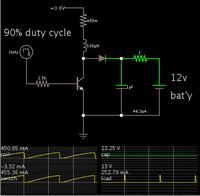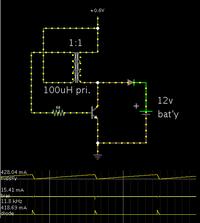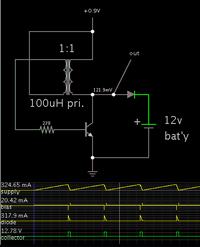pmadithya
Member level 1

- Joined
- Aug 30, 2012
- Messages
- 35
- Helped
- 0
- Reputation
- 0
- Reaction score
- 0
- Trophy points
- 1,286
- Location
- Bangalore,India
- Activity points
- 1,530
Hi,
I have a Fuel cell Source rated at 0.6V,0.4A,33mW and i need to charge a 12V battery.
I need to help to boost D.C. voltage from 0.6V,0.4A,33mW to 13 V. Is there any circuit for it.
Or is there a two step process, maybe two boost converters back to back.
I have a Fuel cell Source rated at 0.6V,0.4A,33mW and i need to charge a 12V battery.
I need to help to boost D.C. voltage from 0.6V,0.4A,33mW to 13 V. Is there any circuit for it.
Or is there a two step process, maybe two boost converters back to back.





